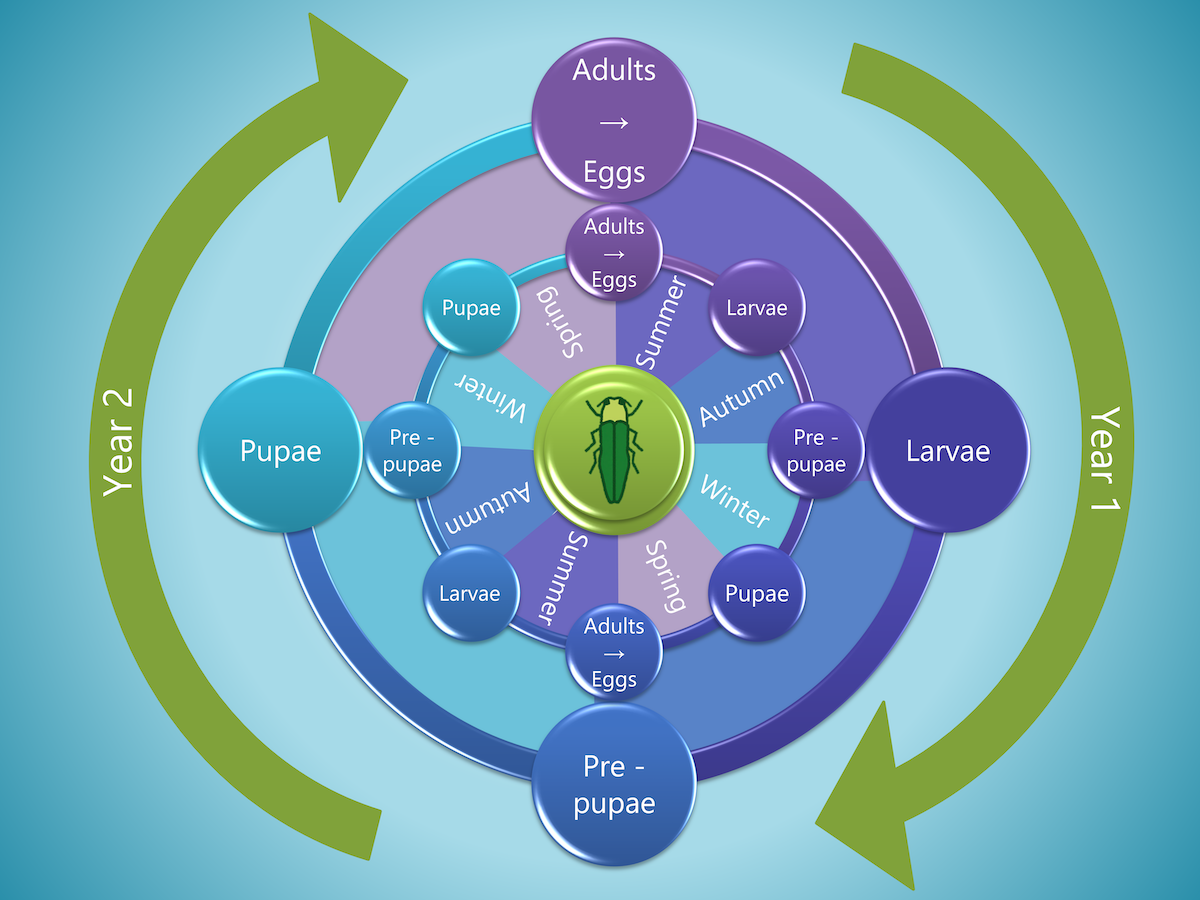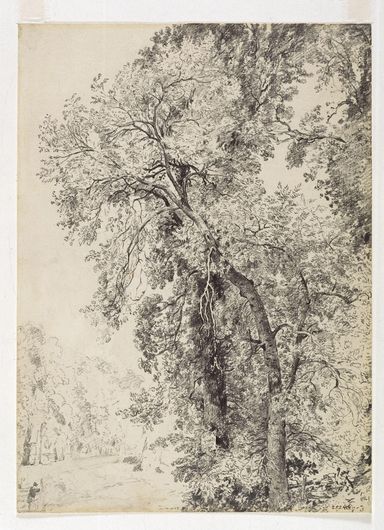Emerald ash borer population dynamics
In the SMARTIES project we are looking at how ash dieback (ADB) and the emerald ash borer (EAB) can affect the health of ash trees. To assess the level of risk that EAB and ADB pose to the ash treescape in the UK we must understand how they interact with the trees themselves.
To start with, we consider the possible invasion and spread of EAB. We examine how EAB can affect the health of ash trees by infesting them, and we do this by modelling their population dynamics of EAB in ash trees and across the landscape.
The emerald ash borer (Agrilus planipennis) is a bright green beetle native to North-East Asia that feeds on ash species. Females lay eggs in the bark crevices of ash trees, and larvae feed of the phloem underneath the bark to emerge as adults after some time. In its native range, it is typically found at low densities and does not cause significant damage. Unfortunately, outside its native range, it becomes incredibly destructive.
We are developing a model that looks at the dynamics of EAB by looking at research done in regions where EAB has become invasive, decimating the ash populations. These include the USA and Russia.
We know that EAB can have a 1- or 2- year life cycle depending on different factors such as temperature and the sensitivity of the attacked tree species. Knowing when the beetle will have a one- or a two- year cycle can help us understand the dispersal potential of the beetle over time, so we include this in our model.

There is a large amount of research on the dynamics of the EAB, so we also know how many eggs they lay; approximately how many develop into larvae and how many survive to the adult stage. Additionally, research has looked at how far they can fly and how far they can travel through other human-mediated dispersal means (for example, through movement of camping firewood). We use all this information to develop a model of the dynamics of the EAB population in the UK ash treescape (see our Host map update to know more about this).

In this way, we can develop scenarios of EAB dispersal within the UK landscape looking at different potential starting points. Where will these riskiest entry points for EAB be is part of what we want to investigate, but this will have to wait for our next update.

